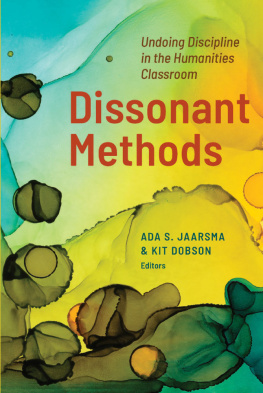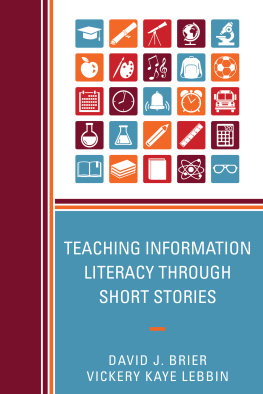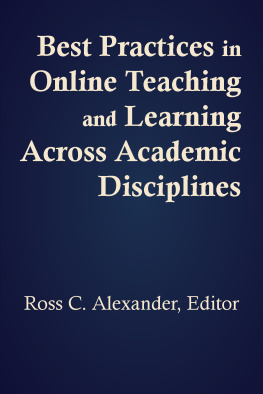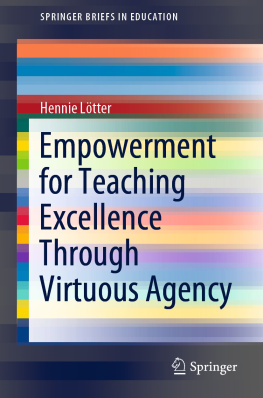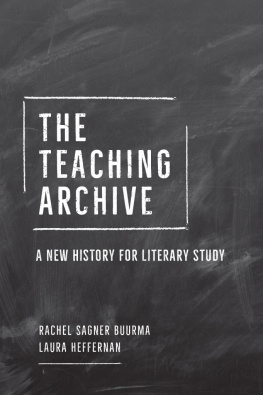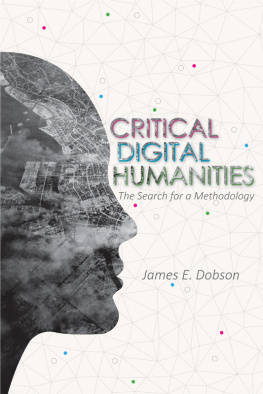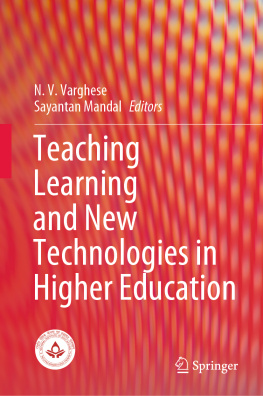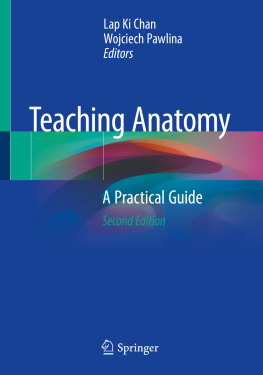Published by
University of Alberta Press
116 Rutherford Library South
11204 89 Avenue NW
Edmonton, Alberta, Canada T6G 2J4
uap.ualberta.ca
Copyright 2020 Ada S. Jaarsma & Kit Dobson
Library and Archives Canada Cataloguing in Publication
Title: Dissonant methods : undoing discipline in the humanities classroom / Ada S. Jaarsma & Kit Dobson, editors.
Names: Jaarsma, Ada S., editor. | Dobson, Kit, 1979 editor.
Description: Includes bibliographical references and index.
Identifiers: Canadiana (print) 20200215507 | Canadiana (ebook) 20200215523 | ISBN 9781772124897 (softcover) | ISBN 9781772125276 (PDF) | ISBN 9781772125252 (EPUB) | ISBN 9781772125269 (Kindle)
Subjects: LCSH: HumanitiesStudy and teaching (Higher) | LCSH: College teachingMethodology. LCSH: Education, HigherAims and objectives.
Classification: LCC AZ182 .D57 2020 | DDC 001.3071/1dc23
First edition, first printing, 2020.
First electronic edition, 2020.
Digital conversion by Transforma Pvt. Ltd.
Copyediting and proofreading by
Kirsten Craven.
Indexing by Adrian Mather.
Cover design by Denise Ahlefeldt.
Cover image: Julie Pelaez, Escape Conformity II. Alcohol ink & rubbing alcohol print, 12" 12". Used by permission.
All rights reserved. No part of this publication may be reproduced, stored in a retrieval system, or transmitted in any form or by any means (electronic, mechanical, photocopying, recording, or otherwise) without prior written consent. Contact University of Alberta Press for further details.
University of Alberta Press supports copyright. Copyright fuels creativity, encourages diverse voices, promotes free speech, and creates a vibrant culture. Thank you for buying an authorized edition of this book and for complying with the copyright laws by not reproducing, scanning, or distributing any part of it in any form without permission. You are supporting writers and allowing University of Alberta Press to continue to publish books for every reader.
University of Alberta Press gratefully acknowledges the support received for its publishing program from the Government of Canada, the Canada Council for the Arts, and the Government of Alberta through the Alberta Media Fund.
This book has been published with the help of a grant from the Canadian Federation for the Humanities and Social Sciences, through the Awards to Scholarly Publications Program, using funds provided by the Social Sciences and Humanities Research Council of Canada.

Contents
Acknowledgements
WE WOULD LIKE TO THANK Mount Royal University, the institution in which we both work, and our colleagues in the Department of Humanities and the Department of English, Languages, and Cultures. In addition, we acknowledge the support of Mount Royal Universitys Institute for the Scholarship of Teaching and Learning, and in particular the TransCanada Collaborative SoTL Grant that made this project possible. Finally, we would like to acknowledge the research assistants who helped with this project: Kyle Kinaschuk, Syd Peacock, Kaitlin Rothberger, and Amanda Lockhart. Thank you, finally, to the University of Alberta Press for supporting this project from its early stages.
Introduction
ADA S. JAARSMA
The set-up of classroom spaces, the curricular commitments of programs, and the hierarchies of universities: these are all examples of forms, according to Levine. Other examples include the very rhythms by which we begin and wrap up our classes, the pacing of our lessons, even the ways in which we hail our students to participate in specific activities: these methods constitute some of the forms by which teaching takes place.
Forms are abstract organizing principles, and they afford different arrangements, relations, and activities; what forms have in common is that they are iterable and portable. As Levine puts it, forms migrate across contexts.
In order to render the forms at play within our classrooms more recognizable, several contributors to this volume make use of a term that might, at first glance, strike the reader as absurdist. The term is tomato, and it comes from a scene in Zadie Smiths novel, On Beauty , in which the methods employed by instructors are designated as specific kinds of tomatoes . Vee is an undergraduate whose fine-grained acuity about the differences between classrooms leads her to classify courses as tomatoes: Professor Simeons class is The tomatos nature versus the tomatos nurture, Vee explains, and Jane Colmans class is To properly understand the tomato, you must first uncover the tomatos suppressed Herstory.
Like any other form, tomatoes lay claim to particular affordances, and in this case, the affordances have to do with the nature of in-class discussion. As Vee explains, to participate successfully in this art history classroom, as a student, is to comment critically on artwork and avoid sentimental declarations like I like that painting. In contrast, Vee describes her own father, a professor with archly religious views, in these terms: Tomatoes Save. The clock on the wall in our classrooms, in other words, is a formal element, one that solicits efficiency from instructors and students alike.
Along these lines, sometimes forms reinforce each other, as in the case of the consonance between the marketing tactics of finance capitalism and the practices of neoliberal universities. Students, tasked with navigating the university as consumers, often understand the teaching practices of their instructors to be oriented toward assessment, first and foremost. According to this logic, the classroom is a space to enter and inhabit because it will launch students into a world of competition for jobs, security, and entrepreneurial self-financing. (Tomatoes that reflect such logics will deploy methods designed to help students to become homo oeconomicus , persons who approach everything as a market and know only market conduct. Such teaching practices might share the designation that Vee assigns to her fathers methodsnamely, Tomatoes Saveexcept that salvation in this instance hinges upon selling ones self and ones future in the marketplace.) It makes great sense, in such contexts, to relate to ones instructor as an assessor: as the person who is important insofar as they are assigning grades. The form that structures these interactions is an aggregate: the GPA.
Sometimes, however, forms collide in dissonant ways, and this dissonance is where Levine places her hope for the possibility of resistance and transformation.
The extent to which instructors are free to draw forth such shifts is a question that this collection, as a whole, explores. Each chapter examines how the organizing power of neoliberal forms can be compromised, rerouted or deflected through the inventive methods of teaching. Methods that are at odds with neoliberal imperatives, for example, operate according to other logics than assessment or panoptical surveillance. As Martin Shuster writes, in the first chapters opening paragraph, teaching might prepare students to tap new desires and unknown possibilities, rather than preparing them solely for a world of labour and competition. Shuster examines the impact of neoliberal pressures upon the very meaning of education, making the case for classrooms as spaces that safeguard and solicit dissonance.
By foregrounding teaching, this book returns, in a way, to the early call of the Scholarship of Teaching and Learning (SoTL) for teachers to relate to teaching as a scholarly practice in its own right. Ernest Boyers 1990 report, Scholarship Reconsidered: Priorities of the Professoriate , noted the devaluation of teaching, especially in relation to academic ambitions and achievements. After all, he wrote, its futile to talk about improving the quality of teaching if, in the end, faculty are not given recognition for the time they spend with students. Boyer made the case for an understanding of teaching as scholarship : subject to review, replete with expertise, deserving of inquiry.
Next page
